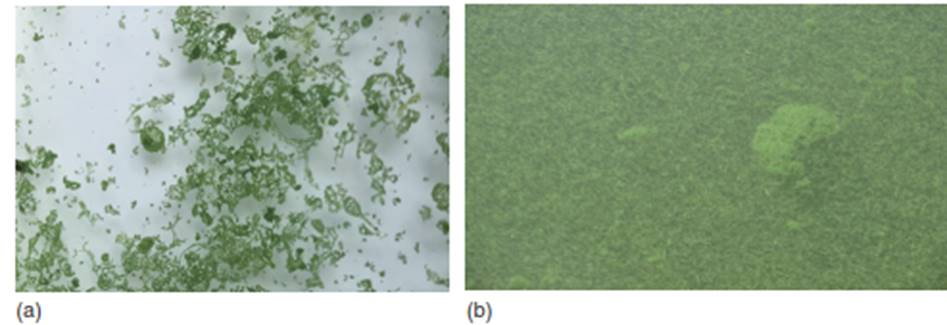Cyanobacterial Blooms: Causes, Observation, and Genetic Analysis
Cyanobacteria are a primary group of organisms capable of negatively impacting freshwater ecosystems worldwide. Their notoriety stems from the production of natural secondary metabolites, which include potent cyanotoxins and taste-and-odor-causing compounds. This potential has significantly raised concerns among the public and regulatory bodies. The formation of cyanobacterial blooms is primarily driven by excessive nutrients, particularly phosphorus from various anthropogenic sources, alongside factors like elevated temperature and increased carbon dioxide levels. A critical element in their success is an exceptional adaptability to a wide range of environmental conditions, which can stimulate certain taxa or strains over others.
While phosphorus is a key stimulant, nitrogen is equally vital for cyanobacterial growth and toxin production. The interplay between these nutrients is crucial; the ratio of nitrogen to phosphorus plays a significant role in selecting for cyanobacteria over green algae. Furthermore, this ratio determines whether cyanobacteria with the capability for nitrogen fixation—the ability to use atmospheric nitrogen—gain an advantage over species restricted to dissolved nitrogen sources like nitrates, nitrites, and ammonia. Evidence compiled by researchers like Huisman et al. points to a global increase in the frequency and magnitude of these blooms, underscoring the need for effective management strategies.
Advanced Methods for Observing Cyanobacterial Blooms.Modern observation of cyanobacterial blooms employs a multi-scale approach, integrating satellite remote sensing, traditional field sampling, and advanced molecular analyses. This integrated methodology is essential for visualizing the spatial extent of a bloom, identifying the presence of potential toxin-producing organisms, and quantifying the types and concentrations of toxins present. Molecular techniques, in particular, are unraveling the physiological and ecological mechanisms that allow bloom-forming organisms to succeed. They help scientists understand the preliminary conditions that select for a specific organism and how it modulates its physiology to dominate the algal community.
Satellite Remote Sensing.Understanding the full extent of a large bloom is challenging from the water's surface but becomes clear from a remote-sensing platform. Satellites equipped with sensors to detect chlorophyll-a, a key photosynthetic pigment, provide a synoptic view. These platforms can map the spatial extent of massive blooms, such as those in Lake Erie, though considerations like cloud cover, temporal resolution, and ground resolution must be accounted for. A significant multiagency effort involving the Environmental Protection Agency (EPA), National Aeronautics and Space Administration (NASA), and others is underway to develop an early warning indicator system. This project, known as the Cyanobacteria Assessment Network (CyAN), aims to create a uniform, systematic approach for identifying blooms across the contiguous United States, using chlorophyll-a as a primary indicator and calibrating satellite data with field-collected samples (Figure 2).

Figure 2. Satellite image of a cyanobacterial bloom in Lake Erie, Michigan, USA, in 2011. Source: Photo credit: NASA Earth Observatory
Field and Laboratory Techniques.On-site observation of a waterbody can immediately reveal an active algal bloom through visible signs like water discoloration (Figure 3a) or the formation of dense surface scums (Figure 3b). Some common species, such as Microcystis aeruginosa and Aphanizomenon flos-aquae (Figure 4), can be tentatively identified in the field. However, microscopic examination is often necessary for definitive genus-level identification, as was required for the Dolichospermum bloom in Figure 3a. In declining populations, cells may lyse and release cellular pigments like phycocyanin, imparting a distinctive turquoise, paint-like color to the water.

Figure 3. (a) Ross Island Lagoon, Willamette River, Oregon, USA, August 7, 2018. Photo credit: Kurt D. Carpenter. (b) Surface scum near Lake Okeechobee, Florida, USA, June 2018. Source: Photo credit: Barry H. Rosen

Figure 4. (a) Microcystis aeruginosa, Lake Okeechobee, Florida, USA, June 2018. Source: Photo credit: Barry H. Rosen. (b) Aphanizomenon flos-aquae, Upper Klamath Lake, Oregon, USA, 2011. Source: Photo credit: Jacob Kann

Figure 5. Common bloom-forming filamentous cyanobacteria: (a) Planktothrix suspensa, (b) Aphanizomenon flos-aquae, (c) Nodularia spumigena, (d) Dolichospermum sp. (e) Cylindrospermopsis raciborskii and (f) Dolichospermum circinale. Source: Photo credits: Barry H. Rosen
Microscopic analysis is fundamental for correctly identifying the organisms within a bloom, which can exhibit diverse morphologies. Organisms may be filamentous, with cells arranged in straight lines, coils (Figure 5), or bundled sheaths (Figure 6a), or they may form distinct colonies (Figure 6b). Taxonomic keys for identifying cyanobacteria to genus and species rely on detailed cell morphology, arrangement, mucilage characteristics, and the presence of specialized cells. While genetic techniques are increasingly useful, they depend on the target organism's DNA sequence being available in a reference database like GenBank® for accurate comparison.

Figure 6. Common bloom-forming cyanobacteria. (a) Aphanizomenon flos-aquae, (b) Gloeotrichia echinulata, (c) Woronichinia naegeliana, (d-f). Microcystis aeruginosa. Source: Photo credits: Barry H. Rosen
Genetic and Genomic Techniques in Cyanobacterial Research.The biochemical pathways for synthesizing most known cyanotoxins have been elucidated, beginning with the microcystin biosynthesis gene cluster. Research has since described the specific gene clusters responsible for producing toxins like nodularin, cylindrospermopsin, saxitoxin, and anatoxin-a. Using various polymerase chain reaction (PCR) assays, researchers can detect the genes responsible for synthesizing these toxins. It is critical to note that the presence of a gene does not confirm its activity or toxin production. To understand this, scientists employ transcriptomics to study gene transcription and proteomics to analyze the subsequent synthesis of proteins, providing a comprehensive view of the organism's physiological response to its environment.
A single toxin can be produced by distantly related taxonomic groups, a phenomenon known as convergent evolution. For instance, cylindrospermopsin is produced by Oscillatoria, Chrysosporum ovalisporum, and Lyngbya wollei. Furthermore, genetic studies have confirmed that both toxic and nontoxic strains can exist within a single species, a trait that may impart specific ecological or competitive advantages. Genetics is also pivotal for studying phylogenetic relationships between organisms using markers like 16s rRNA sequences, leading to taxonomic reclassifications, such as moving planktonic Anabaena species to the genus Dolichospermum.
Modern studies increasingly focus on the entire microbial community through metagenomics, which provides insights into the assemblage of cyanobacterial species and their associated heterotrophic bacteria during a bloom. These studies may eventually yield predictive capabilities for bloom onset. For example, transcriptomic research has demonstrated that nutrient availability can cause genome rearrangements and influence species evolution. Concurrently, proteomics is revealing how nutrient limitations alter protein expression in carbon metabolism, offering new concepts for understanding the complex dynamics of cyanobacterial blooms. This multi-faceted genetic approach is bridging the gap between traditional morphological observation and modern molecular systematics.
Date added: 2025-11-17; views: 11;
